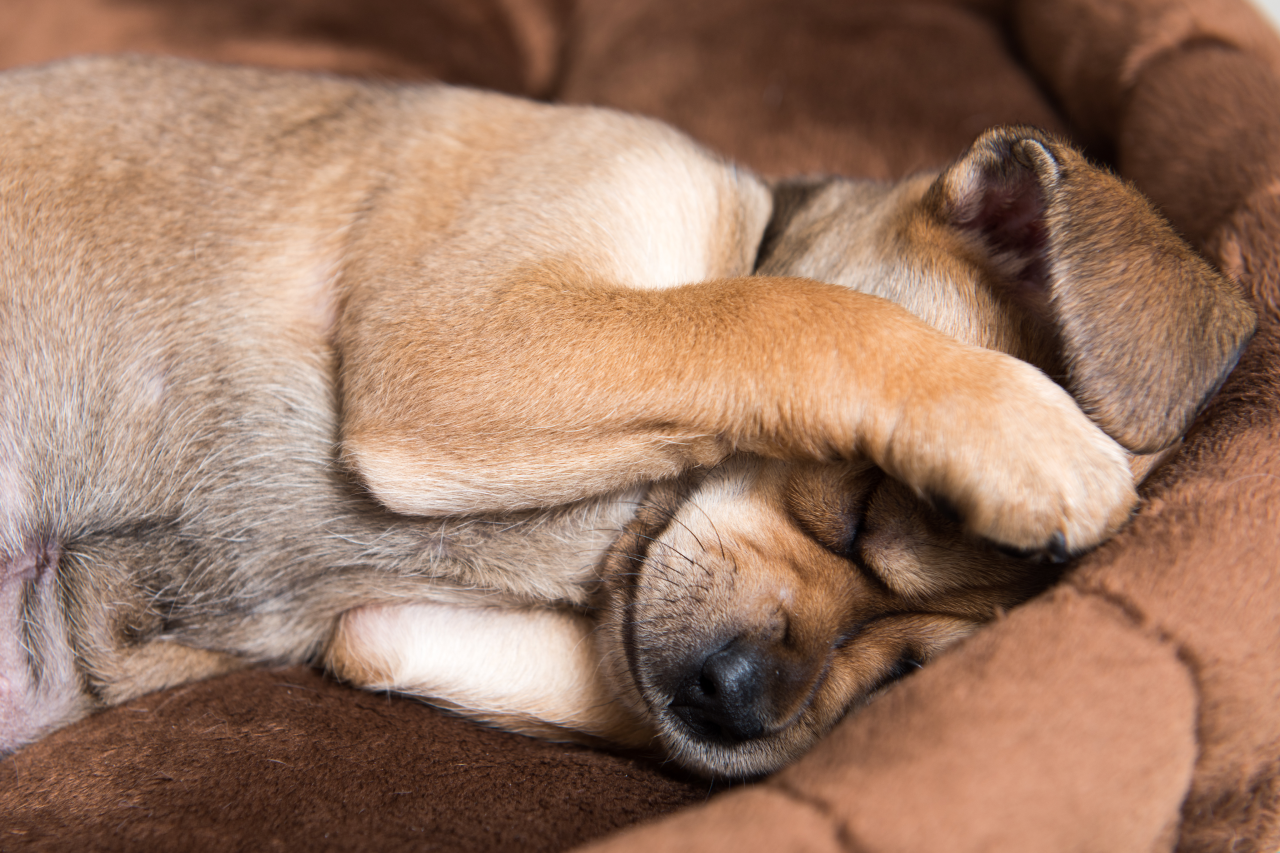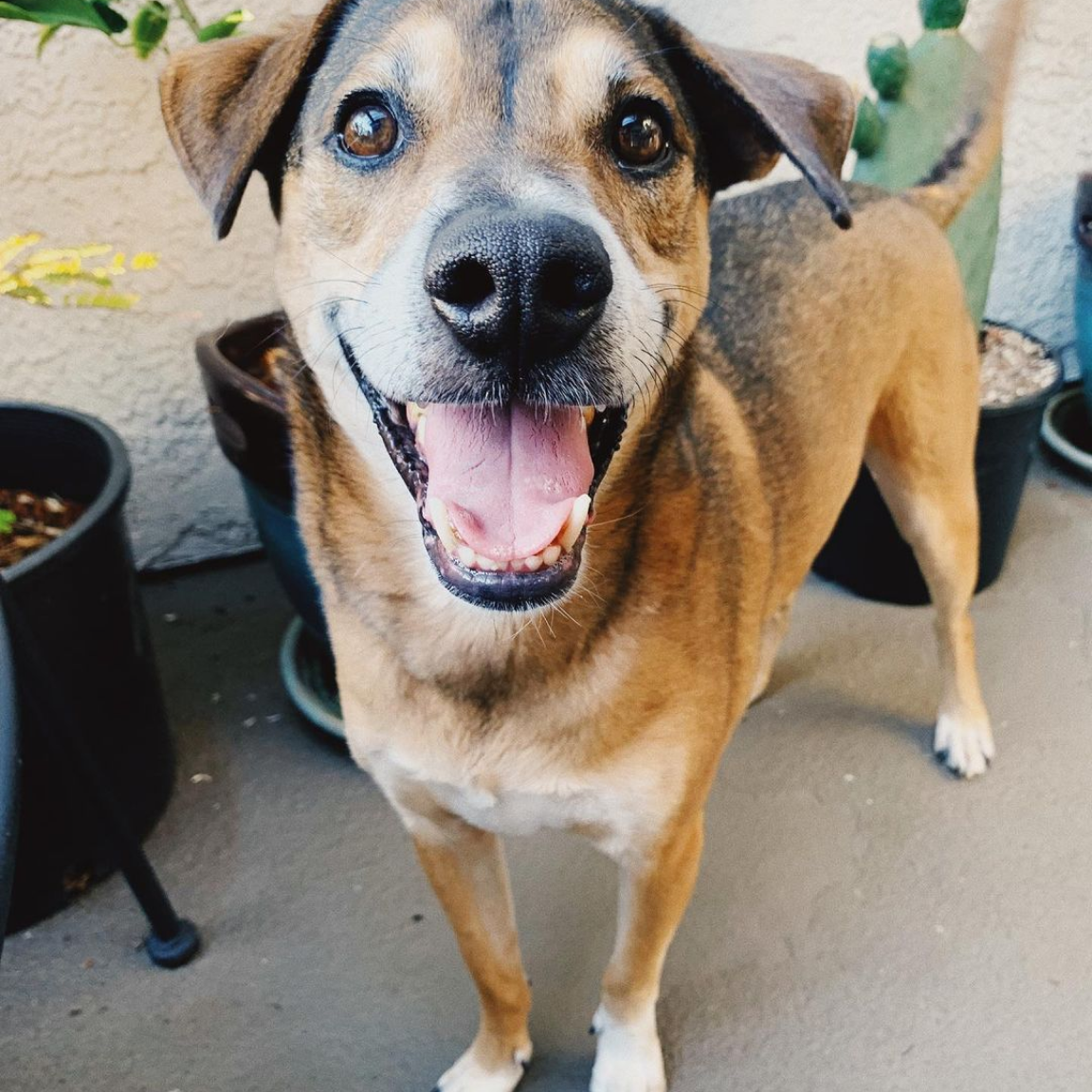
Fireworks, Thunderstorms, and Noise Phobias in Pets
Firework fears, thunderstorm anxiety, and noise phobias (fear of loud noises) affect an estimated 30 to 40% of all dogs. This compares to 10 to 20% of dogs that suffer from separation anxiety. Making matters worse, approximately 85% of dogs with fear of noises also experience some degree of separation anxiety. (If you’re wondering about our feline friends, we aren’t sure how many experience noise phobias primarily because they tend to hide until their episode is over.) Even more concerning is the fact that many inexplicable and seemingly spontaneous behavior problems in dogs (and cats) may be due in part to noise phobias. After all, the world is so much louder to our pets than it is to our ears.
In a recent UK study, almost half of the dog owners reported their dog displayed at least one symptom of noise fear. Most dog parents shared that their dog showed symptoms whenever fireworks, gunfire, or thunder occurred. Interestingly, only one in four of these same dog owners described their pet as “fearful.” This means many pet owners don’t recognize that exposure to loud noises causes fear and anxiety. The study found that whenever a dog was shaking and trembling after hearing a loud noise, the owner associated those signs with fear. Hiding, seeking attention, and vocalizing weren’t thought of as fear responses, although they typically are. Other subtle signs of fear include salivation, depression, and decreased activity. The study also found many dog owners were disappointed or angry whenever their dog urinated inappropriately or damaged household items. These emotions could influence how dog owners perceive fear and anxiety in dogs. The bottom line is that pet owners need to be on the lookout for any signs their pet is nervous, anxious, or afraid when exposed to loud or unusual noises.
The Good News: We've Made Progress
Veterinarians have made significant progress in aiding dogs suffering from noise phobia. Behavioral modification techniques, especially using relaxing and “safe place” strategies, compressive clothing such as “calming shirts,” natural remedies including stress-relieving pheromones and relaxing lavender, and pharmacological interventions, most notably SSRI’s (selective serotonin reuptake inhibitors) such as Reconcile (fluoxetine) treatment combined with behavioral modification (training such as desensitization to loud noises and redirection). These treatments, both alone and in combination, have eased anxiety in countless canines confronting noise phobia. But what about the dog that only rarely experiences fear of loud noises, say, on July 4? There is a somewhat newer medication that can help with that.
Before I tell you about this prescription medication (and this is my personal opinion and experiences and is not sponsored or associated with any drug or treatment I’ll discuss), I’d like to review some other popular treatments for noise phobia and aversions.
Natural Remedies That May Help Your Dog
On the natural front, there are many treatments you can try. It’s important to keep in mind that few, if any, of these natural countermeasures are able to help in an acute, immediate situation. In other words, they take time to work. If a thunderstorm blows up on a late summer afternoon, reaching for my favorite herbal remedy might not provide any relief for an anxious pet. If your pet has a noise phobia, it’s important to provide a thorough behavioral modification program with the help of your veterinarian. A combination of desensitization techniques, natural compounds, and prescription medication is often needed to help most pets successfully cope with noise-related anxiety.
I’ll begin with some of the more common nonprescription options, then introduce you to a new highly-effective drug, and finally outline a basic noise-desentization program.
Calmex is a blend of two of my favorite mood-altering nutrients, l-theanine, and l-tryptophan. It is formulated for both dogs and cats, and I’ve had some pet parents report it helped their pet’s noise phobia. For long term support and to aid in a variety of stressful conditions, I often recommend dog appeasing pheromones (DAP) in a collar, diffuser, or mister. I generally begin treatment of my feline patients with a synthetic feline facial pheromone product such as Feliway. I’m still a fan of Thundershirts and other anxiety wraps in both dogs and cats; it even helped my own dog deal with her hurricane-stress. I think the act of applying a compression garment to a pet can be soothing, and I use it as an entry to use a behavior modification technique called “safe space.” Valerian extract, Rescue Remedy, and other Bach flower remedies, as well as the natural compounds in Anxitane, Zylkene, and Composure (those two contain animal ingredients), have helped many dogs.
Again, your results may vary. There are few scientific studies of these treatments and quality assurance can swing widely between manufacturers. Just because DAP seemed to “cure” one dog’s anxiety doesn’t’ mean your dog will experience the same results. Modifying behavior and calming stressed-out dogs is complex and challenging. That’s why most veterinarians rely on tested, proven, and reliable prescription medications when dealing with an acute condition, such as July 4 fireworks.
A New Advancement
In 2016, veterinarians gained an ally in the fight against noise aversion with the FDA approval of Sileo (dexmedetomidine oromucosal gel). Sileo was the first (and remains the only) medication approved in the US for the treatment of noise aversion in dogs. This treatment is particularly helpful because it doesn’t sedate the pet when used at label dosages. It’s also easy to administer because it’s a gel you squirt inside your dog’s cheek and gums. No struggling to pop a pill or conceal a capsule.
In my experience (and the reason I’m mentioning it to you), Sileo works when your dog needs it. If a pet parent with a noise aversion dog knows fireworks or loud noises will begin at a certain time, I instruct them to administer it 30 to 60 minutes beforehand to help ease fear and anxiety. According to studies, each dose lasts about two to three hours, usually long enough to get through most firework celebrations and storms. If necessary, you can repeat the drug up to five times, providing up to 15 hours of help.
If your dog suffers from a fear of loud noises, talk to your veterinarian. If it’s a single, July Fourth-only kind of problem, a drug like Sileo could be all you need. If thunder, loud cars, or dropping a plate send your pooch into a panic, a more comprehensive behavior modification, nutritional supplements, and prescription medication regimen may be required. The reality is no dog should suffer from these fears and anxieties when we have proven methods to help.
General Tips to Help Your Pet with Noise
While it’s impossible to predict and prevent all traumatic events in your dog’s life, there are steps you can take to make any pet less likely to develop noise phobias. For starters, if you live in an area prone to afternoon thunderstorms, don’t overreact whenever you hear thunder in front of your pet. They need reassurance that this terrifying noise is not a threat and look to us for guidance. It’s not a bad idea to periodically turn up the volume on your radio or TV and behave as if this is completely normal. Use food rewards when your dog relaxes in the presence of loud stimuli. In over twenty years of practice, I’ve found that how pet owners react to sudden or loud noises has a tremendous impact on how their pets react. You’re being watched by your pet even when you don’t know you’re being watched. A calm, cool and collected owner usually transfers those traits to their pets.
The first step in overcoming noise phobias is to identify the cause. This seemingly simple step can prove challenging even for the most experienced investigator. For example, many dogs with thunderstorm fears become anxious as the atmospheric pressure drops or the wind shifts. Good luck detecting those subtle shifts. Sometimes a flash of lightning is the cue it’s time to freak out. In other cases, dogs or cats may become sensitive to high-pitched or faraway noises we humans can’t hear. By far the most common noise phobia I see in dogs or cats is associated with thunder followed by fireworks and other unexpected loud noises.
For fear of thunder (or almost any noise aversion), I typically start by having the owner work on relaxation and reward techniques. The goal is to counter-condition the fear with relaxation. For example, start by teaching (or reviewing) with your dog sit-stay and down-stay. I’m trying to remind the dog that they can relax and rely on us to take care of them for a moment. I offer highly palatable food rewards such as our Wild Earth or sweet potato treats for most dogs.
Twice-a-day training sessions lasting five to fifteen minutes for several days until the dog completely relaxes during the sit-stay and down-stay. I’ll even have owners massage their dog during these sessions to help deepen relaxation and focus.
Once we’re back in tune with basic commands and relaxation, I turn on a playlist of thunder noises. I have the owner put the dog in a calm sit or down posture and turn up the volume just a bit. I’m looking closely for any signs of stress: licking, averted glances, trembling and the like. What I am attempting to address is the earliest noise level that creates stress and immediately counter it with known commands to redirect their attention and offer food rewards. I maintain the stimulus for ten to twenty minutes, based on the dog’s response level. The next day we repeat the exercise, this time hopefully with the volume slightly higher. We continue until the dog can tolerate really loud levels of thunder sounds and is able to maintain a relaxed posture.
If you know a storm (or fireworks event) is coming, you can also try playing loud, slow-tempo classical music with the high bass frequencies turned up and treble down. Close the curtains to minimize your dog seeing fireworks, lightning flashes, or swaying trees and shrubs from the wind. If your dog seeks shelter by trying to crawl into closets or under beds, set up a "safe place" and reward the dog for going there after placing it in a down-stay.
I don’t recommend placing your dog in a crate or closed room unless it is accustomed to it. Confining an anxious dog in an enclosed space is asking for injury if the dog isn’t used to it. It is critical that you only reward your dog after it relaxes in its shelter. You must be careful not to reward fearful or anxious behavior. Finally, never, ever punish a fearful dog. I don’t even use “No!” when working on these types of behavior problems. The dog isn't being naughty; it’s scared to death.
Desensitization or counter-conditioning techniques such as this work in many cases. The drawback is that many dog owners lack the time or patience to do this correctly and effectively or the dog has a phobia associated with multiple stimuli. Regardless, this technique should be a part of most behavioral modification treatment, including those that incorporate medications.
Ultimately, They need a pet parent just like you!
Dogs and cats suffering from noise phobia and aversions need a committed, caring, and patient pet parent to improve. Sadly, many pets are euthanized for behavioral problems that persist and worsen, including noise phobias. Rarely do noise fears improve without intervention. In fact, most escalate until something catastrophic occurs such as injury, destruction of property, or aggression develops. Talk to your veterinarian at the first sign of any noise aversion. Early recognition and intervention are essential for successful outcomes.
Perhaps the best method to prevent noise phobias in your dog or cat is to expose them to unusual noises early in life. By allowing your young pup to experience a wide variety of environmental stimuli, you’re teaching them that their noisy world is not a big, scary place – just a loud one.
Though we live in a noisy world, it doesn’t have to be fearful for our pets. By recognizing the subtle signs of noise anxiety in pets, working with your veterinarian on safe and effective solutions, and teaching young pets to acclimate to unusual sounds, we can turn down the volume on this serious behavioral dilemma. The earlier they get used to the wide world of racket, the better behaved they’re likely to be. Stay safe and enjoy your holidays!






































